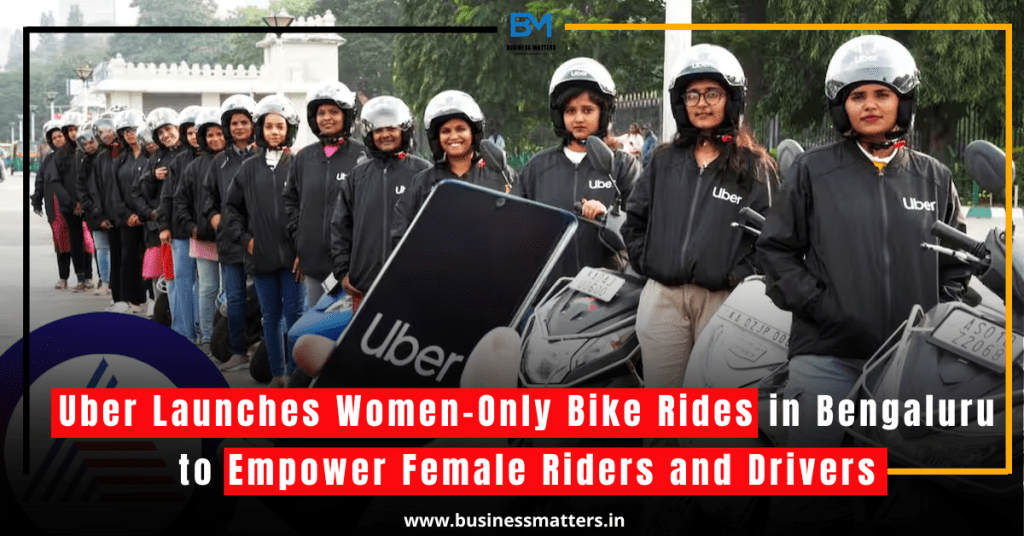Uber Launches Women-Only Bike Rides in Bengaluru to Empower Female Riders and Drivers
Uber, the leading ride-hailing platform, has launched a new service in Bengaluru called Uber Moto Women, aimed at providing safer and more convenient transportation options for women. This initiative is part of Uber’s ongoing efforts to enhance safety, convenience, and empowerment for women, both as passengers and drivers. The service introduces a women-only bike ride option, where both riders and drivers are women, making it a significant step toward addressing safety concerns in the urban mobility sector.
Enhancing Safety and Empowering Female Gig Workers
The Uber Moto Women service is designed with a dual purpose: ensuring that women have a safer ride experience and offering earning opportunities for female gig workers. As women riders often feel more comfortable with female drivers, this service is expected to create a more secure environment for passengers, reducing concerns about personal safety during rides.
In a statement, Abhishek Padhye, head of regional business operations at Uber India and South Asia, highlighted the importance of the initiative. He said, “With Uber Moto Women, we are not just offering a safer and more convenient ride option for women, but also empowering female drivers with the opportunity to earn flexibly in one of India’s fastest-growing mobility segments.” This emphasis on empowering women drivers reflects Uber’s commitment to creating inclusive and diverse opportunities in the gig economy.
By focusing on female drivers, Uber also opens the door to economic independence for women, particularly in a sector that has traditionally seen lower female participation. This move aligns with the broader goal of encouraging gender inclusivity and giving women the flexibility to work according to their own schedules, especially in a city like Bengaluru, which has a thriving, dynamic workforce.
Uber’s Ongoing Efforts to Improve Driver and Rider Experience
The launch of Uber Moto Women comes on the heels of Uber’s introduction of a range of features designed to enhance both rider and driver experiences. A few weeks prior, Uber rolled out a women rider preference feature, allowing female riders to specifically choose female drivers when booking rides. This feature, coupled with Uber Moto Women, signals the company’s dedication to addressing safety concerns for women passengers and drivers alike.
Additionally, Uber has taken other steps to improve the overall safety of its platform. The company has implemented features like in-app emergency buttons, ride-sharing safety checks, and 24/7 support to ensure that both riders and drivers have a secure and comfortable experience. The women-only ride options build on these safety measures, further enhancing Uber’s reputation as a company committed to user well-being.
The Impact on Women Drivers and the Gig Economy
The introduction of Uber Moto Women also has the potential to create positive ripple effects in the larger gig economy. India’s gig workforce has grown exponentially, but women have historically faced barriers in entering sectors like ride-hailing due to safety concerns and societal biases. By offering an exclusive platform for female drivers, Uber is not only helping to address these barriers but is also paving the way for more women to participate in the workforce on their own terms.
The flexibility of the gig economy allows women to earn money while balancing family responsibilities, education, or other commitments. The Uber Moto Women service, in particular, provides a unique opportunity for women to engage in one of India’s fastest-growing mobility sectors, which could serve as a stepping stone to greater financial independence and empowerment.
Conclusion
Uber’s launch of Uber Moto Women in Bengaluru is a welcome step toward improving safety, convenience, and inclusivity in the ride-hailing industry. By providing women with a safer ride experience and creating new earning opportunities for female gig workers, Uber is not just responding to the demand for women-only services but is also playing a role in shaping a more inclusive and empowered future for women in India’s rapidly evolving urban mobility sector. As the service expands to other cities, it could have a lasting impact on the way women navigate their daily commute and participate in the gig economy.


